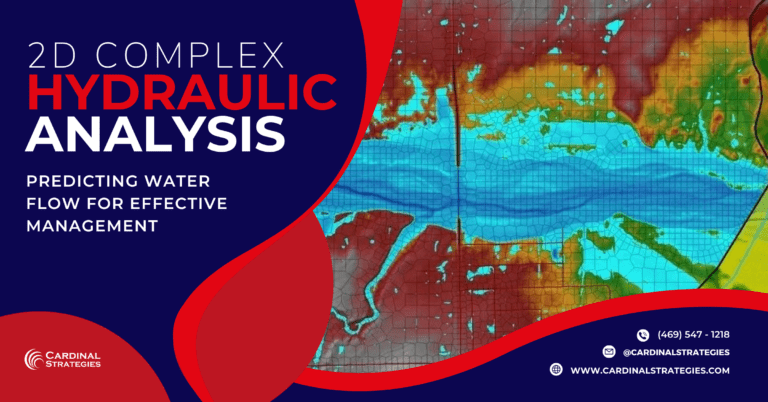
In the world of civil engineering and environmental management, hydraulic modeling serves as a crucial tool. It provides a detailed understanding of water flow, enabling professionals to predict, manage, and mitigate potential risks associated with water systems. In this blog post, we delve into the significance of hydraulic modeling and how it contributes to effective water management.
What is Hydraulic Modeling?
Hydraulic modeling is a scientific method used to simulate water movement within different systems, such as rivers, reservoirs, water distribution networks, or stormwater systems. Using mathematical equations and computer software, hydraulic models can predict how water will behave under various conditions, providing valuable insights for planning, designing, and managing water-related projects.
The Role of Hydraulic Modeling in Water Management
1. Infrastructure Design and Planning
Hydraulic models are often used in the design and planning stages of infrastructure projects like bridges, dams, or sewer systems. These models can predict how proposed designs will interact with existing water systems, helping to identify potential issues before construction begins. This predictive capability leads to more informed decision-making, potentially saving time and resources.
2. Flood Risk Assessment
Hydraulic modeling plays a critical role in assessing flood risks. By simulating different scenarios, such as heavy rainfall or dam failure, hydraulic models can predict areas that are most likely to flood. This information is invaluable for developing effective flood mitigation strategies and emergency response plans.
3. Environmental Impact Analysis
Understanding the potential impacts of a project on local water systems is essential for environmental conservation. Hydraulic modeling can help assess these impacts, providing key data for environmental impact assessments and aiding in the development of strategies to minimize negative effects.
4. Operations and Maintenance
For existing infrastructure, hydraulic modeling can aid in operational decision-making and maintenance planning. For example, in a water distribution system, models can help identify areas of low pressure or potential pipe failures.
Hydraulic modeling is a powerful tool in the hands of engineers and environmental scientists. At Cardinal Strategies, we harness the power of this technology to deliver robust, sustainable solutions for our clients. Our team of experts uses state-of-the-art hydraulic modeling software to predict water behavior accurately, ensuring effective management of water resources and systems.
Whether you’re planning a new infrastructure project, assessing flood risk, or aiming to improve the operation of an existing water system, hydraulic modeling can provide the critical insights you need. Trust the experts at Cardinal Strategies to guide you through this complex process and help you make informed, effective decisions.

Cardinal Strategies provides the engineering, environmental, and construction expertise needed to solve complex stormwater challenges.
2024 WBE of the Year Award Winner
Firm PE Certifications:
Texas Firm No. F-11976
Oklahoma Firm No. 7713







© 2023 Cardinal Strategies. All Rights Reserved.
Site built by Harp & Sling